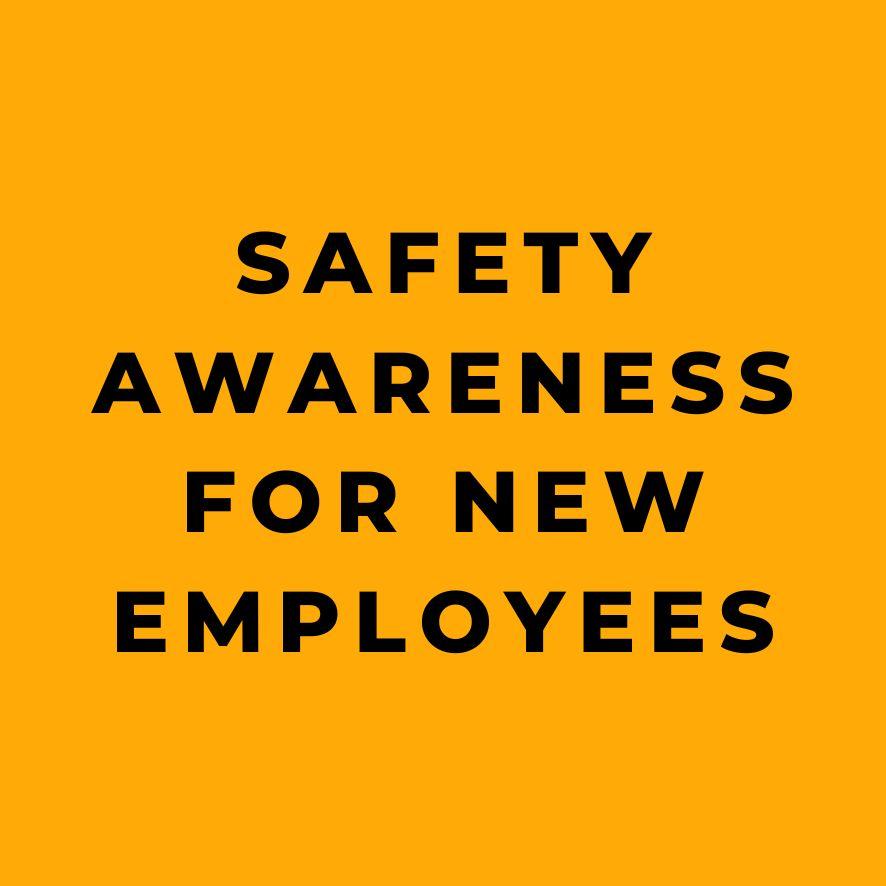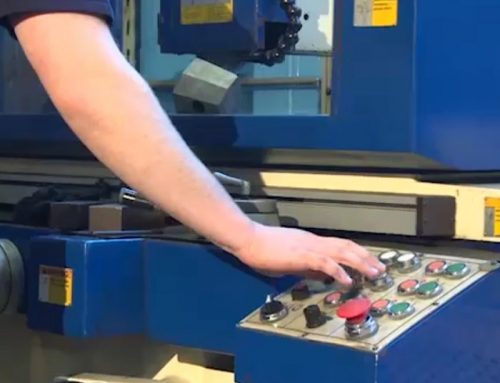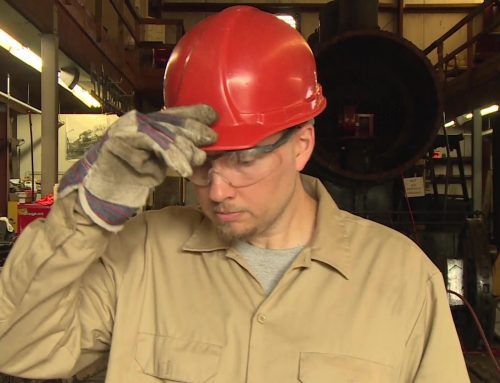Starting a new job is an exciting time filled with new responsibilities, procedures, and coworkers. But it’s also crucial to keep workplace safety top of mind from day one. This comprehensive guide extracted from an online workplace safety training course will provide an in-depth look at major on-the-job hazards and how to avoid them.
Slips, Trips and Falls
Many on-the-job accidents begin with a slip, trip or fall. You don’t have to fall from a great height to suffer serious injury. Simply slipping and falling to the floor can cause sprains, fractures, traumatic brain injuries and more.
Slips occur due to a lack of friction between your shoes and the walking surface. They often happen where floors are smooth, slick, wet, or contaminated with oil, water, or other liquids. Pay special attention near facility entrances, restrooms, and around machinery where spills frequently occur.
Loose objects, materials, cords, and clutter on the floor are tripping hazards. Good housekeeping like cleaning up trash and spills is essential. Use absorbents like kitty litter to soak up liquid spills then sweep them up. Keep aisles, stairs, and doorways clear.
Wear shoes with slip-resistant soles. Casual shoes may lack the traction needed for industrial workplace floors. Look out for loose boards, torn carpets, and floor holes and report them immediately. Replace burnt out lightbulbs and damaged fixtures so you can see hazards.
Ladders
Even replacing a lightbulb overhead can be hazardous without proper ladder safety:
- Inspect ladders before use and remove damaged ladders from service
- Place ladder legs securely on a level surface
- Maintain a 4:1 ratio – keep base 1 foot away for every 4 feet of height
- Face the ladder and maintain 3 points of contact while climbing
- Keep belt buckle centered between side rails
- Climb down slowly using 3 points of contact
Ergonomics
Ergonomics involves adjusting your workspace and habits to your physical makeup to reduce injury from repetitive motions, awkward positions, and heavy lifting:
- Take regular breaks from repetitive tasks and alternate motions
- Adjust workstations and chairs for proper back support
- Position materials and tools within easy reach to avoid stretching
- Don’t lift heavy objects alone – use devices or get help
- When lifting, keep the load close with a straight back and bend knees
- Turn with feet when carrying loads, don’t twist at the back
- Arrange work flow to minimize reaching and heavy lifting
Tools and Machinery
Power tools cause thousands of traumatic injuries and deaths annually. Follow safe practices:
- Inspect tools for defects before use
- Use the right tool for the job
- Follow manufacturer’s instructions for safe operation
- Check power cords and hoses for cracks, cuts and fraying
- Avoid electric tools near water or flammable vapors
Industrial machines have safeguards like guards, light curtains, and pressure mats. Never use a machine without safeguards in place and properly maintained. Wear appropriate PPE in case hazards get past the guards.
Keep the work area clean so materials don’t fall into moving parts. Don’t wear loose clothes, jewelry, or unrestrained hair around machinery. Never operate equipment without training and authorization. Stay focused – don’t use machinery when ill, tired or distracted.
Forklifts
Only trained and certified operators should drive forklifts. Experienced operators need ongoing safe work practice refreshers:
- Use 3-point entry and exit with two hands and one foot in contact
- Wear seatbelts and keep arms and legs inside
- Drive at safe speeds and watch for pedestrians
- Sound the horn and look both ways at intersections
- Keep forks low, 4-6 inches above the floor when driving
- Drive in reverse if load blocks forward view – use a spotter
- Handle turns and wet floors slowly to avoid skidding
- Keep loads stable by tilting back and keeping forks low
- If tipping, brace feet and lean opposite the tip direction
Electricity
Electrical hazards are deadly – stay alert!
- Inspect cords and equipment for defects before use
- Use grounded circuits and equipment
- Never overload circuits with too many cords
- Distribute loads across circuits using extension cords
- Keep equipment away from water
- Use fiberglass ladders near power lines
Lockout/Tagout procedures ensure equipment power stays off during service and prevents horrific injuries. Only authorized employees install and remove lockout devices so energy cannot be restored unexpectedly. Never attempt to remove locks or energize equipment someone else has locked out.
Hazardous Chemicals
The Hazard Communication Standard gives workers the right to know about chemical hazards and how to work safely around them. Key elements include:
Safety Data Sheets (SDS) – Detailed chemical information with procedures for safe handling, storage, exposure controls, PPE, and emergency response.
Labels – Quick visual hazard warnings and precautions on chemical containers.
Written Program – Facility procedures for identifying and labeling hazardous chemicals and accessing SDSs.
Always use appropriate PPE when handling hazardous substances as specified in SDSs, on labels, and in your facility’s written program.
Fire Prevention
Industrial fires spread rapidly and cause severe damage. Prevention is key. Store flammables away from ignition sources like welding. Use fire blankets and screens to contain sparks and slag from hot work. Post a fire watch to look for stray sparks.
Avoid overloading electrical circuits. Clean equipment regularly to prevent combustible buildup. Shut down and report overheating equipment or damaged wiring immediately. Monitor appliances in break rooms. Extinguish and properly dispose of smoking materials.
Emergency Preparedness
Emergency Action Plans cover fires, spills, natural disasters, and other emergencies. Know your facility’s plan. Identify at least two exit routes and never block exits or evacuation routes. When an alarm sounds, leave immediately by stairs – never use elevators. Close doors to isolate hazards while exiting. Stay low to the floor in smoke. Report to designated assembly areas so personnel can be accounted for.
First Aid
Every workplace should have first aid kits and trained responders. Call emergency services immediately for:
- Unconsciousness
- Head, neck or back injury
- Inability to move/bear weight
- Obvious fractures or sprains
- Heart attack – difficulty breathing, chest tightening, nausea
- Heat stroke – high fever, headache, nausea, unconsciousness
For cuts and scrapes, stop bleeding, clean, dry and bandage the wound. For burns, apply cool water and cover with a sterile dressing – don’t use ointments. Avoid contact with blood and other potentially infectious bodily fluids – wear gloves and wash thoroughly after providing first aid. First aid is not a substitute for professional medical care – always get help.
Working Safely is a Team Effort
Staying actively safety-minded is crucial, even for experienced employees. Complacency can lead to accidents and injuries. Make workplace safety a top priority by following good work practices, wearing PPE, reporting hazards, preparing for emergencies, and staying alert. We can all contribute to safety success by looking out for ourselves and each other.
In the ever-evolving workplace, the importance of safety cannot be overstated. This comprehensive guide has delved into various aspects of workplace safety, emphasizing its significance for new employees. Understanding and implementing these safety measures is not just a responsibility but a vital skill that can save lives and prevent injuries. This transition to a culture of safety awareness and proactive measures is not just a shift in mindset but also a call to action for employers and employees alike.
Unlock the secret to a safer and more efficient workplace with Our “Safety Orientation” online training program. This comprehensive course is a pivotal step in drastically reducing workplace accidents and fostering a culture of safety from the very first day. A Groundbreaking Approach to Safety Training Annually, on-the-job accidents not only cause immense physical and emotional pain but also cost businesses a staggering $90 billion in various losses. However, the majority of these incidents are preventable. Our “Safety Orientation” course is tailored to address this urgent need by educating employees on recognizing and mitigating job-related hazards.
Are you ready to empower your new employees with the ultimate shield of safety on their very first day? Introducing Our “Safety Awareness for New Employees” – a groundbreaking online safety training course designed to revolutionize workplace safety!
Transform Newcomers into Safety Experts
In today’s fast-paced work environment, nearly three million employees suffer from job-related injuries or illnesses annually. The key to breaking this cycle lies in proactive safety training from day one. Our course is meticulously crafted to turn your new employees into safety advocates, ensuring they are not just aware but deeply understanding of the potential hazards in their roles.
A Comprehensive Safety Curriculum
Our full-length interactive course covers an extensive range of topics that are crucial for every new employee:
- Navigating through common workplace hazards like slips, trips, and falls.
- Mastering industrial ergonomics for a healthier work style.
- Safe handling of hand and power tools and machinery.
- In-depth forklift safety protocols.
- Critical electrical safety and lock-out/tag-out procedures.
- Effective communication regarding hazards and the correct use of personal protective equipment.
- Fire prevention strategies and emergency response tactics.
- Managing health emergencies with first aid knowledge and understanding of bloodborne pathogens.
Engaging and Accessible Learning
With Our’s engaging MicroLearning curriculum, each topic is broken down into digestible 3-5 minute courses, perfect for the modern, fast-paced workplace. These courses are not only comprehensive but also available in both English and Spanish, ensuring accessibility and understanding across a diverse workforce.
Beyond Just Courses
Our’s commitment to safety training extends beyond online courses. We offer a range of training materials including DVDs, interactive CD courses, kits, booklets, and posters – all designed to reinforce a culture of safety within your organization.
Your Partner in Safety Training
Choose Our “Safety Awareness for New Employees” and transform your workplace into a safer, more productive environment. We are not just a course provider; we are your partner in fostering a culture of safety and awareness from the ground up. Ready to make safety a priority from day one? Let Our guide you every step of the way.
For a detailed course outline and to experience a demo of Our Online Training System, click here. Let’s embark on this journey to a safer workplace together!










